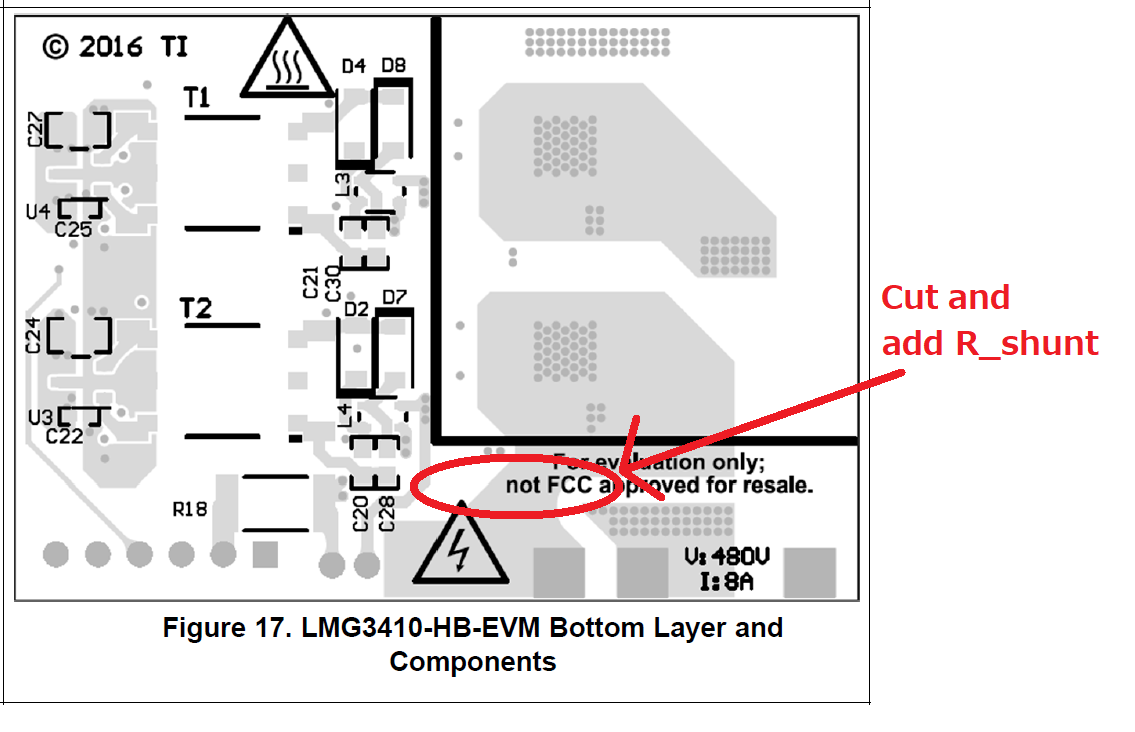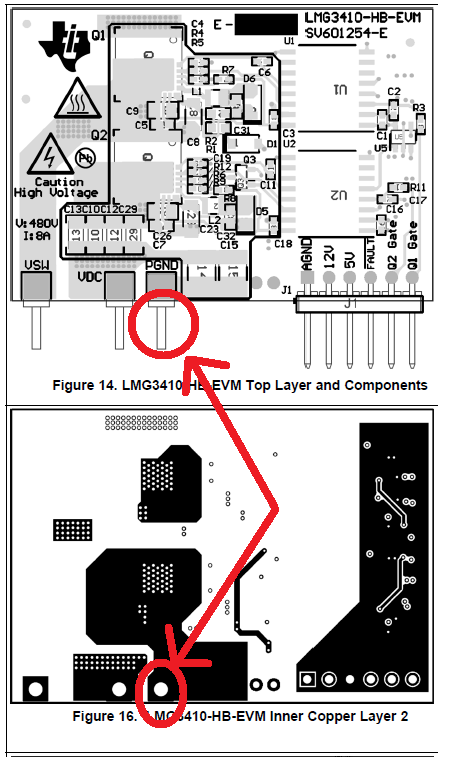Customer is evaluating LMG3410-HB-EVM (and LMG3410-BB-EVM), but L2(inductor) was increased over 120℃ by thermograph.
User's guide is described that heatsink and airflow are recommended, but I think these idea is not critical for decrease L2 temperature.
(L2 was not decrease temperature)
Please let me know about two points question below;
①Is there proposed measures by L2 temperature?
②Please let me know about measuring method for High-side GaN's drain current.
【Condition】
・Input(Primary): DC 400V
・Output(Secondary): 200V
・PWM: 5Vpp
ON Duty:0.3~0.5
・Pout: 35W(ON Duty:0.3)~100W(ON Duty:0.5)
・fsw: 50kHz
・Ta: about 20℃
Best regards,
Satoshi




